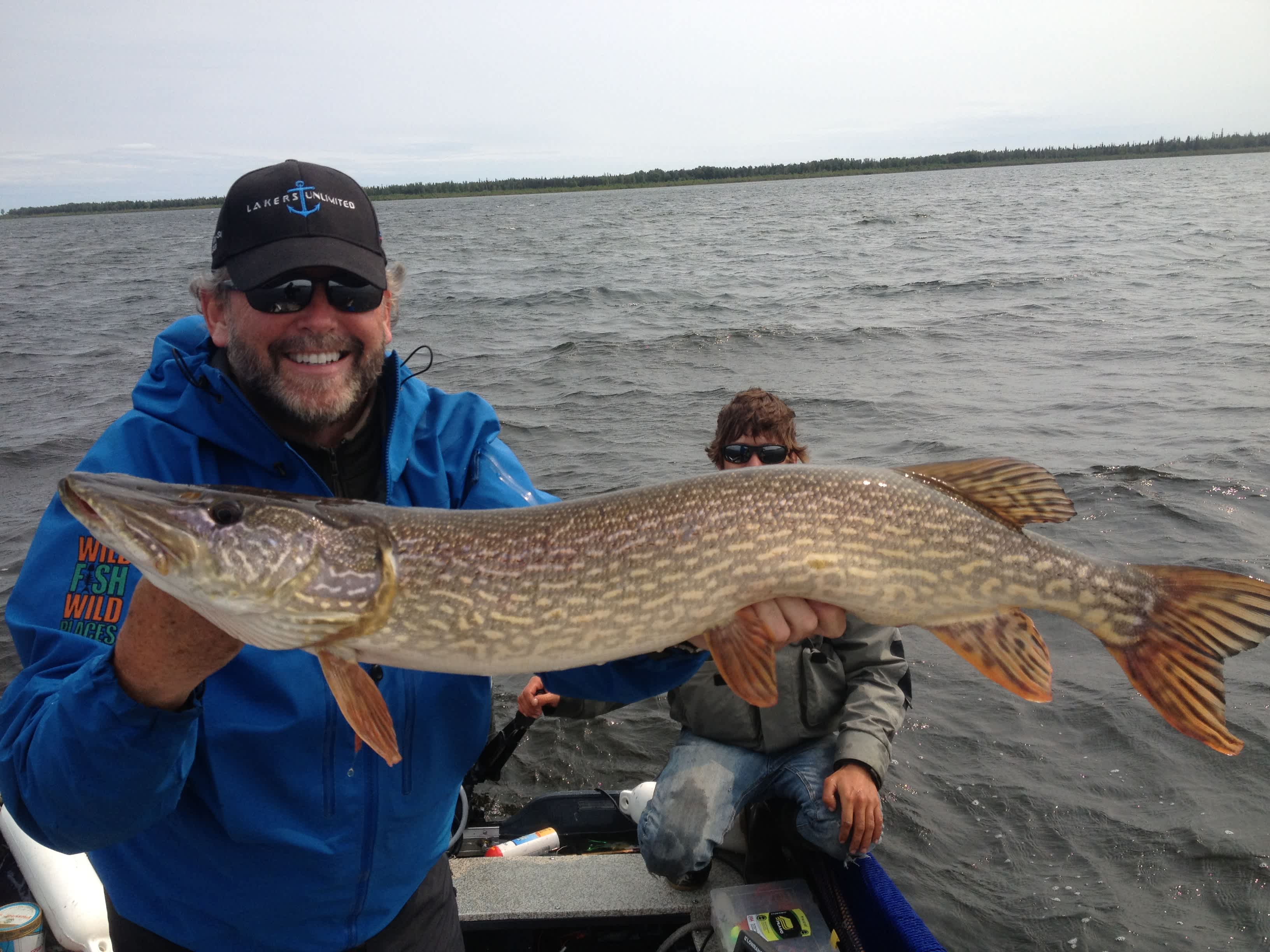Fort McMurray: Gateway to Big Fish Nirvana
Wild Fish Wild Places 09.19.13

Although it was my third visit to Fort McMurray, the booming exploration city in the northeast corner of Alberta, Canada, I was still excited to see the familiar city outline stretching along the horizon as my plane landed and 28 straight hours of travel came to a conclusion.
Fort Mac, as some affectionately call it, is the jumping-off point for floatplane rides to Lakers Unlimited Spring Bay Lodge, situated on the north shore of Lake Athabasca—my ultimate destination. When Team Wild Fish are travelling to film, we tend to fly in and out of whatever city or town happens to be the jumping-off point. This time ’round, we had arranged to spend a little time in Fort Mac, hoping to get the feel of this frontier city and to get an insight into its new identity as “the earth’s largest oil sands extraction hub.”
The sands
After a good night’s sleep in the Sawridge Hotel, I awoke fully recharged for the adventures that lay ahead. The buffet breakfast at the Sawridge will rejuvenate the flagging spirits of the weariest of travelers and our hearty breakfast saw the Wild Fish crew refueled and rarin’ to go.
Our first port of call was a visit to the Oil Sands Discovery Centre, which just happens to be right across the road from the Sawridge. The Oil Sands Discovery Centre is committed to increasing public awareness and knowledge of the history, science, and technology of the oil sands discoveries that form the largest-known reservoir of crude bitumen in the world, making Canada’s oil deposits the second largest in the world after Saudi Arabia in terms of proven oil reserves.
We had a guided tour of the Centre, which provided a comprehensive walk-through of the area’s history, from the first discovery of oil to today’s mammoth developments of the extraction and refining plants that have mushroomed across this pristine land. We learned that the oil sands (known as the Athabasca Oil Sands) consist of a mixture of crude bitumen (a semi-solid form of crude oil), silica sand, clay, and water. The Athabasca deposit, along with the nearby Peace River and Cold Lake deposits, form the world’s largest subterranean reservoir of crude bitumen.
We also had the opportunity to climb up into a 150-ton dump truck, giving us a driver’s-eye view of the size and scale of the diesel-powered behemoth. Standing about four stories tall and sporting tyres that cost $55,000 each, this is where size does matter. A bit like Wild Fish Wild Places and the fish we hunt!
Denis and I could have spent many more hours engrossed in the impressive array of interactive displays and films. However, we had a plane to catch and giant pike to hunt in the many bays and river mouths that embroider the north shoreline of mighty Athabasca.

The waters
A week at Lakers Unlimited chasing big pike and lunker lake trout is my idea of “undergoing intense therapy.” Early morning breakfasts and firm friendships forged among guests and guides make for great starts to each day. And then there’s the fishing. Double hook-ups with a thrashing and flailing 20-pounder on Denis’ fly rod; a bad-tempered, acrobatic giant on my weedless spinner acting like its fins are on fire…action like that sets Athabasca apart from other fisheries. I laugh as I write this, remembering the outrageous spectacle as Denis set the hook on successive 20-pounders, in the same honey hole, on the fly! We laughed and joked with our wonderful guide, Kelly Riehl, at the non-stop, explosive action from a bunch of big pike we came upon when Kelly carefully eased the boat into a shallow river channel. What fishing, what memories!
A much-overlooked factor in the success and one’s enjoyment of any guided fishing trip (besides the quality of the fishing) is the knowledge, personality, and boat-handling skills of the guide. As with all of the Lakers Unlimited guide staff, Kelly is a true pro. He is one of the best big water guides that we have had the pleasure to spend a week with.
The pike fishing was simply out of this world, with eight fish surpassing the magic 20-pound mark. Although we didn’t spend as much time this trip hunting lakers, we still managed our share of 20-pound trout topped by a real beauty that took a liking to my Dodger from the Sand Drop.
Guides Kelly and Parker prepared a shore lunch feast of deep-fried lake trout in a sweet ‘n’ sour sauce while we basked in a sheltered sunny hollow on a windswept island. As we chowed down, a pair of nesting Bald Eagles kept watch from a distant pine. Athabasca magic!
Time flies on a Lakers Unlimited trip—such is the quality of the total wilderness experience on this unique water.

